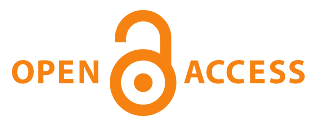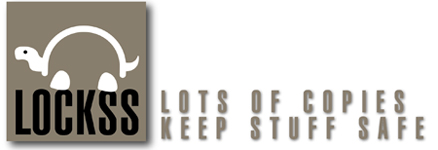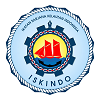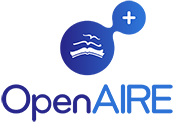- Focus and Scope
- Section Policies
- Peer Review Process
- Open Access Policy
- Archiving
- Publication Frequencies
- Contents Licensing, Copyright and Permissions
- Publication Ethics
- Plagiarism Policy
- Article Submission and Processing Fees
Focus and Scope
Jurnal Kelautan: Indonesian Journal of Marine Science and Technology is scientific journal in the field of marine science and technology which is published offline and online three times a year (April, August, December) by Department of Marine Sciences, Trunojoyo University of Madura.
This journal aim to become a medium of dissemination of high quality research and scientific note in the fiend of marine science and technology. This journal can be accessed and downloaded freely for everyone. The article published in this journal have been pass the rigorious peer review by the expert reviewer.
This journal accept every article that contain the following, but not limited to, scope:
1. Marine and fisheries ecology and biology
2. Marine fisheries
3. Marine biotechnology
4. Marine culture
5. Marine processes and dynamics
6. Marine conservation
7. Marine pollution
8. Marine and coastal resource management
9. Marine and fisheries processing technology
10. Salt technology
11. Marine geology, physical and chemical oceanography
12. Marine Technology
Section Policies
Artikel
Peer Review Process
The review process will be conducted by Single peer review process. This process will involve independent reviewer. We can accept article written in English or Indonesian language. Article written in Indonesian or English. We aim to publish the article more or less 1 month after accepted by review process.
All articles will be subjected to plagiarism check.
Open Access Policy
This journal provides immediate open access to its content on the principle that making research freely available to the public supports a greater global exchange of knowledge.
This journal is open access journal which means that all content is freely available without charge to users or / institution. Users are allowed to read, download, copy, distribute, print, search, or link to full text articles in this journal without asking prior permission from the publisher or author. This is in accordance with

Budapest Open Access Initiative
For various reasons, this kind of free and unrestricted online availability, which we will call open access, has so far been limited to small portions of the journal literature. But even in these limited collections, many different initiatives have shown that open access is economically feasible, that it gives readers extraordinary power to find and make use of relevant literature, and that it gives authors and their works vast and measurable new visibility, readership, and impact. To secure these benefits for all, we call on all interested institutions and individuals to help open up access to the rest of this literature and remove the barriers, especially the price barriers, that stand in the way. The more who join the effort to advance this cause, the sooner we will all enjoy the benefits of open access.
The literature that should be freely accessible online is that which scholars give to the world without expectation of payment. Primarily, this category encompasses their peer-reviewed journal articles, but it also includes any unreviewed preprints that they might wish to put online for comment or to alert colleagues to important research findings. There are many degrees and kinds of wider and easier access to this literature. By "open access" to this literature, we mean its free availability on the public internet, permitting any users to read, download, copy, distribute, print, search, or link to the full texts of these articles, crawl them for indexing, pass them as data to software, or use them for any other lawful purpose, without financial, legal, or technical barriers other than those inseparable from gaining access to the internet itself. The only constraint on reproduction and distribution, and the only role for copyright in this domain, should be to give authors control over the integrity of their work and the right to be properly acknowledged and cited.
While the peer-reviewed journal literature should be accessible online without cost to readers, it is not costless to produce. However, experiments show that the overall costs of providing open access to this literature are far lower than the costs of traditional forms of dissemination. With such an opportunity to save money and expand the scope of dissemination at the same time, there is today a strong incentive for professional associations, universities, libraries, foundations, and others to embrace open access as a means of advancing their missions. Achieving open access will require new cost recovery models and financing mechanisms, but the significantly lower overall cost of dissemination is a reason to be confident that the goal is attainable and not merely preferable or utopian.
To achieve open access to scholarly journal literature, we recommend two complementary strategies.
I. Self-Archiving: First, scholars need the tools and assistance to deposit their refereed journal articles in open electronic archives, a practice commonly called, self-archiving. When these archives conform to standards created by the Open Archives Initiative, then search engines and other tools can treat the separate archives as one. Users then need not know which archives exist or where they are located in order to find and make use of their contents.
II. Open-access Journals: Second, scholars need the means to launch a new generation of journals committed to open access, and to help existing journals that elect to make the transition to open access. Because journal articles should be disseminated as widely as possible, these new journals will no longer invoke copyright to restrict access to and use of the material they publish. Instead they will use copyright and other tools to ensure permanent open access to all the articles they publish. Because price is a barrier to access, these new journals will not charge subscription or access fees, and will turn to other methods for covering their expenses. There are many alternative sources of funds for this purpose, including the foundations and governments that fund research, the universities and laboratories that employ researchers, endowments set up by discipline or institution, friends of the cause of open access, profits from the sale of add-ons to the basic texts, funds freed up by the demise or cancellation of journals charging traditional subscription or access fees, or even contributions from the researchers themselves. There is no need to favor one of these solutions over the others for all disciplines or nations, and no need to stop looking for other, creative alternatives.
Open access to peer-reviewed journal literature is the goal. Self-archiving (I.) and a new generation of open-access journals (II.) are the ways to attain this goal. They are not only direct and effective means to this end, they are within the reach of scholars themselves, immediately, and need not wait on changes brought about by markets or legislation. While we endorse the two strategies just outlined, we also encourage experimentation with further ways to make the transition from the present methods of dissemination to open access. Flexibility, experimentation, and adaptation to local circumstances are the best ways to assure that progress in diverse settings will be rapid, secure, and long-lived.
The Open Society Institute, the foundation network founded by philanthropist George Soros, is committed to providing initial help and funding to realize this goal. It will use its resources and influence to extend and promote institutional self-archiving, to launch new open-access journals, and to help an open-access journal system become economically self-sustaining. While the Open Society Institute's commitment and resources are substantial, this initiative is very much in need of other organizations to lend their effort and resources.
We invite governments, universities, libraries, journal editors, publishers, foundations, learned societies, professional associations, and individual scholars who share our vision to join us in the task of removing the barriers to open access and building a future in which research and education in every part of the world are that much more free to flourish.
February 14, 2002
Budapest, Hungary
Leslie Chan: Bioline International
Darius Cuplinskas: Director, Information Program, Open Society Institute
Michael Eisen: Public Library of Science
Fred Friend: Director Scholarly Communication, University College London
Yana Genova: Next Page Foundation
Jean-Claude Guédon: University of Montreal
Melissa Hagemann: Program Officer, Information Program, Open Society Institute
Stevan Harnad: Professor of Cognitive Science, University of Southampton, Universite du Quebec a Montreal
Rick Johnson: Director, Scholarly Publishing and Academic Resources Coalition (SPARC)
Rima Kupryte: Open Society Institute
Manfredi La Manna: Electronic Society for Social Scientists
István Rév: Open Society Institute, Open Society Archives
Monika Segbert: eIFL Project consultant
Sidnei de Souza: Informatics Director at CRIA, Bioline International
Peter Suber: Professor of Philosophy, Earlham College & The Free Online Scholarship Newsletter
Jan Velterop: Publisher, BioMed Central
Archiving

Open Journal Systems supports the LOCKSS (Lots of Copies Keep Stuff Safe) system to ensure secure and permanent preservation of this journal.
This journal also archieved in Indonsian Archiving GARUDA (https://garuda.kemdikbud.go.id/journal/view/6199)
Publication Frequencies
Jurnal Kelautan is published thrice a year.
Contents Licensing, Copyright and Permissions
Jurnal Kelautan have CC-BY or an equivalent license as the optimal license for the publication, distribution, use, and reuse of scholarly work.
In developing strategy and setting priorities, Jurnal Kelautan recognize that free access is better than priced access, libre access is better than free access, and libre under CC-BY or the equivalent is better than libre under more restrictive open licenses. We should achieve what we can when we can. We should not delay achieving free in order to achieve libre, and we should not stop with free when we can achieve libre.

Jurnal Kelautan by Program Studi Ilmu Kelautan is licensed under a Creative Commons Attribution 4.0 International License.
Publication Ethics
PUBLISHING ETHICAL STATEMENT
Ethical guidelines for journal publication (based on Elsevier policies)
Please complete and return this form via email, and retaining a copy for your records.
Marine Sciences department of UTM as Jurnal Kelautan publisher take its duties of guardianship over all publishing process and we recognize our ethical and other responsibilities
We are committed to ensuring that advertising, reprint or other commercial revenue has no impact or influence on editorial decisions.
DUTIES OF AUTHORS
(based on Elsevier policies and COPE's Best Practice Guidelines for Journal Editors)
Reporting standards
Authors of reports of original research should present an accurate account of the work performed as well as an objective discussion of its significance. Underlying data should be represented accurately in the paper. A paper should contain sufficient detail and references to permit others to replicate the work. "Fraudulent or knowingly inaccurate statements constitute unethical behavior and are unacceptable". Review and professional publication articles should also be accurate and objective, and editorial opinion works should be clearly identified as such.
Data access and retention
Authors may be asked to provide the raw data in connection with a paper for editorial review, and should be prepared to provide public access to such data, if practicable, and should in any event be prepared to retain such data for a reasonable time after publication.
Originality and plagiarism
The authors should ensure that they have written entirely original works, and if the authors have used the work and/or words of others that this has been appropriately cited or quoted. Plagiarism takes many forms, from 'passing off' another's paper as the author's own paper, to copying or paraphrasing substantial parts of another's paper (without attribution), to claiming results from research conducted by others. Plagiarism in all its forms constitutes unethical publishing behaviour and is unacceptable.
Multiple, redundant or concurrent publication
An author should not in general publish manuscripts describing essentially the same research in more than one journal or primary publication. Submitting the same manuscript to more than one journal concurrently constitutes unethical publishing behaviour and is unacceptable. In general, an author should not submit for consideration in another journal a previously published paper. Publication of some kinds of articles (e.g. guidelines, translations) in more than one journal is sometimes justifiable, provided certain conditions are met. The authors and editors of the journals concerned must agree to the secondary publication, which must reflect the same data and interpretation of the primary document. The primary reference must be cited in the secondary publication.
Acknowledgement of sources
Proper acknowledgment of the work of others must always be given. Authors should cite publications that have been influential in determining the nature of the reported work. Information obtained privately, as in conversation, correspondence, or discussion with third parties, must not be used or reported without explicit, written permission from the source. Information obtained in the course of confidential services, such as refereeing manuscripts or grant applications, must not be used without the explicit written permission of the author of the work involved in these services.
Authorship of the paper
Authorship should be limited to those who have made a significant contribution to the conception, design, execution, or interpretation of the reported study. All those who have made significant contributions should be listed as co-authors ( so its mean that manuscript at least have author and co author). Where there are others who have participated in certain substantive aspects of the research project, they should be acknowledged or listed as contributors. The corresponding author should ensure that all appropriate co-authors and no inappropriate co-authors are included on the paper, and that all co-authors have seen and approved the final version of the paper and have agreed to its submission for publication. If the work involves chemicals, procedures or equipment that have any unusual hazards inherent in their use, the author must clearly identify these in the manuscript.
Disclosure and conflicts of interest
All authors should disclose in their manuscript any financial or other substantive conflict of interest that might be construed to influence the results or interpretation of their manuscript. All sources of financial support for the project should be disclosed. Examples of potential conflicts of interest which should be disclosed include employment, consultancies, stock ownership, honoraria, paid expert testimony, patent applications/registrations, and grants or other funding. Potential conflicts of interest should be disclosed at the earliest stage possible.
Fundamental errors in published works
When an author discovers a significant error or inaccuracy in his/her own published work, it is the author's obligation to promptly notify the journal editor or publisher and cooperate with the editor to retract or correct the paper. If the editor or the publisher learns from a third party that a published work contains a significant error, it is the obligation of the author to promptly retract or correct the paper or provide evidence to the editor of the correctness of the original paper.
DUTIES OF THE EDITORIAL BOARD
(based on Elsevier policies and COPE's Best Practice Guidelines for Journal Editors)
Publication decisions
The editor of a peer-reviewed Jurnal Kelautan is responsible for deciding which of the articles submitted to the journal should be published. The validation of the work in question and its importance to researchers and readers must always drive such decisions. The editor may be guided by the policies of the journal's editorial board and constrained by such legal requirements as shall then be in force regarding libel, copyright infringement and plagiarism. The editor may confer with other editors or reviewers in making this decision.
Fair play
An editor should evaluate manuscripts for their intellectual content without regard to race, gender, sexual orientation, religious belief, ethnic origin, citizenship, or political philosophy of the authors.
Confidentiality
The editor and any editorial staff must not disclose any information about a submitted manuscript to anyone other than the corresponding author, reviewers, potential reviewers, other editorial advisers, and the publisher, as appropriate.
Disclosure and conflicts of interest
Unpublished materials disclosed in a submitted manuscript must not be used in an editor's own research without the express written consent of the author. Privileged information or ideas obtained through peer review must be kept confidential and not used for personal advantage. Editors should recuse themselves (i.e. should ask a co-editor, associate editor or other member of the editorial board instead to review and consider) from considering manuscripts in which they have conflicts of interest resulting from competitive, collaborative, or other relationships or connections with any of the authors, companies, or (possibly) institutions connected to the papers. Editors should require all contributors to disclose relevant competing interests and publish corrections if competing interests are revealed after publication. If needed, other appropriate action should be taken, such as the publication of a retraction or expression of concern.
Involvement and cooperation in investigations
An editor should take reasonably responsive measures when ethical complaints have been presented concerning a submitted manuscript or published paper, in conjunction with the publisher (or society). Such measures will generally include contacting the author of the manuscript or paper and giving due consideration of the respective complaint or claims made, but may also include further communications to the relevant institutions and research bodies, and if the complaint is upheld, the publication of a correction, retraction, expression of concern, or other note, as may be relevant. Every reported act of unethical publishing behavior must be looked into, even if it is discovered years after publication.
DUTIES OF REVIEWERS
(based on Elsevier policies and COPE's Best Practice Guidelines for Journal Editors)
Contribution to editorial decisions
Peer review assists the editor in making editorial decisions and through the editorial communications with the author may also assist the author in improving the paper. Peer review is an essential component of formal scholarly communication, and lies at the heart of the scientific method.
Promptness
Any selected referee who feels unqualified to review the research reported in a manuscript or knows that its prompt review will be impossible should notify the editor and excuse himself from the review process.
Confidentiality
Any manuscripts received for review must be treated as confidential documents. They must not be shown to or discussed with others except as authorized by the editor.
Standards of objectivity
Reviews should be conducted objectively. Personal criticism of the author is inappropriate. Referees should express their views clearly with supporting arguments.
Acknowledgement of sources
Reviewers should identify relevant published work that has not been cited by the authors. Any statement that an observation, derivation, or argument had been previously reported should be accompanied by the relevant citation. A reviewer should also call to the editor's attention any substantial similarity or overlap between the manuscript under consideration and any other published paper of which they have personal knowledge.
Disclosure and conflict of interest
Unpublished materials disclosed in a submitted manuscript must not be used in a reviewer's own research without the express written consent of the author. Privileged information or ideas obtained through peer review must be kept confidential and not used for personal advantage. Reviewers should not consider manuscripts in which they have conflicts of interest resulting from competitive, collaborative, or other relationships or connections with any of the authors, companies, or institutions connected to the papers.
Plagiarism Policy
"PLAGIARISM" can occur in two forms: 1) author(s) intentionally copy someone else’s work and claim it as their own, or 2) author(s) copy her or his own previously published material either in full or in part, without providing appropriate references - also called as "self-plagiarism" or "duplicate publication".
Plagiarism before publication
Jurnal Kelautan will judge any case of plagiarism on its own merits. If plagiarism is detected, either by the editors, peer reviewers or editorial staff at any stage before publication of a manuscript - before or after acceptance, during editing or at page proof stage, we will alert the author(s), asking her or him to either rewrite the text or quote the text exactly and to cite the original source. If the plagiarism is extensive - that is, if at least 30% of the original submission is plagiarized - the article may be rejected and the author's institution/employer notified.
When is plagiarism check done?
Every manuscript submitted for publication to any journal published by Jurnal Kelautan is checked for plagiarism after submission and before being sent to an editor for editorial review.
How is plagiarism check done?
Jurnal Kelautan uses Grammarly and/or Plagiarism Checker X to detect instances of overlapping and similar text in submitted manuscripts.
How are manuscripts with plagiarism handled?
The manuscripts in which plagiarism is detected are handled based on the extent of plagiarism present in the manuscript.
<30% plagiarism - The manuscript is is immediately sent back to the authors for content revision.
>30% plagiarism - The manuscript is rejected without editorial review. The authors are advised to revise the plagiarized parts of the manuscript and resubmit it as a fresh manuscript.
Is it possible that plagiarism/duplicate publication may not be detected in a manuscript submitted for publication?
Sometimes it may not be possible to detect plagiarism/duplicate publication in a manuscript submitted for publication. Some situations are:
1. Plagiarism
It may happen that the manuscript is not freely accessible to article indexing services due to restrictions by programmers, journals or publishers; or it is available on the journal website but not yet indexed by article indexing services. In such cases when plagiarism check is done the content of the manuscript being checked cannot be compared to the original manuscript due to restrictions and plagiarism will not be detected.
2. Duplicate Publication
i) same manuscript, with or without minor changes, is submitted to two or more journals at the same time and it is published in both the journals,
ii) a manuscript is submitted to a journal but it is withdrawn from the journal before publication and is submitted to another journal; however, it is still published in the first journal.
In the above cases when pre-processing check is done by one journal, duplicate publication will not be detected, as the manuscript is still under process in the other journal and has not been published online. It is likely that one journal will publish the manuscript, unaware that it is also being published in the other journal.
In all the above examples, after the manuscript is published, readers will see two published articles in two different journals with all or some content which is exactly the same.
What can you do if you come across a case of plagiarism in any journal from any publisher?
If you come across a case of plagiarism in any journal from any publisher, please do inform the editorial office(s) of all the involved journals, giving them the journal names, title of manuscripts, name of authors, volume number, issue number, year of publication and any other information you may have. The editorial offices will handle the cases as per their policy.
Plagiarism after publication
If plagiarism is detected after publication, Jurnal Kelautan will conduct an investigation. If plagiarism is found, the journal editorial office will contact the author's institute and funding agencies. The paper containing the plagiarism will be marked on each page of the PDF. Depending on the extent of the plagiarism, the paper may also be formally retracted.
Article Submission and Processing Fees
This journal charges the following author fees.
Article Submission FREE: 0.00 (USD)
Article Publication FREE: 0.00 (USD)
Where Author need a printed copy of the journal, Author need to pay the cost of printing as well as shipping fee.













